Exercises for bedbound seniors are tailored to improve mobility, strength, and mental well-being. Regular movement helps prevent complications and enhances quality of life with proper caregiver support.
Why Mobility Matters for Bedridden Seniors
Mobility is crucial for bedridden seniors to prevent complications like pressure sores and muscle atrophy. Regular movement improves circulation, reduces stiffness, and enhances mental well-being. Even small movements can boost independence, making daily care easier and improving overall quality of life.
The Purpose of Exercise for the Bed Bound Elderly
Exercise for bedbound seniors aims to maintain strength, flexibility, and circulation. It prevents muscle atrophy, enhances joint mobility, and reduces the risk of pressure sores. Regular movement also boosts mood and mental health, promoting a sense of accomplishment and improving overall well-being.
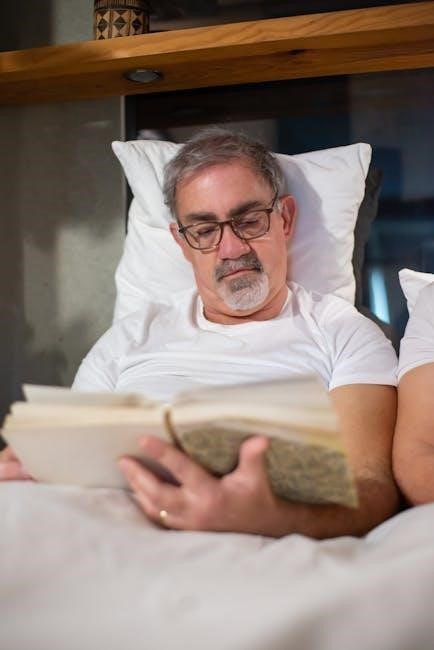
The Importance of Physical Activity for Bedridden Seniors
Physical activity is crucial for bedridden seniors to maintain muscle tone, improve circulation, and prevent complications like pressure sores and joint stiffness, enhancing overall health and well-being.
Physical Benefits of Regular Exercise
Regular exercise for bedbound seniors improves circulation, strengthens muscles, and enhances joint flexibility. It helps prevent pressure sores, reduces stiffness, and supports better posture, contributing to overall physical comfort and functionality, while also aiding in maintaining healthy skin integrity and promoting independence in daily activities.
Mental and Emotional Benefits of Exercise
Exercise uplifts mood, reduces depression, and enhances mental well-being. It provides a sense of accomplishment and purpose, boosting self-esteem. Social interaction during exercise reduces feelings of isolation, fostering emotional connection and cognitive stimulation, which are vital for overall mental health and happiness in bedbound seniors.
Preventing Health Complications Through Movement
Regular movement helps prevent muscle atrophy, joint stiffness, and poor circulation. It reduces the risk of pressure sores and improves skin health. Exercise also supports respiratory function, lowering the chance of pneumonia and other infections, while enhancing overall physical stability and independence for bedbound seniors.
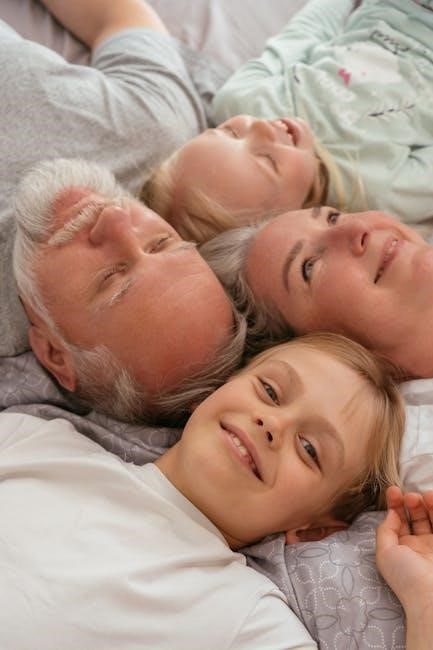
Types of Exercises Suitable for Bed Bound Seniors
Exercises for bedbound seniors include lower extremity, upper extremity, gentle stretching, and chair-based movements.
Passive Range of Motion Exercises
Passive range of motion exercises involve a caregiver gently moving the elderly individual’s joints through a full range of movement. These exercises improve flexibility, reduce stiffness, and prevent contractures without requiring active participation from the bedridden senior. Regular practice enhances joint mobility and supports overall physical comfort.
Active Assisted and Resisted Exercises
Active assisted exercises require the bedridden senior to move their joints with caregiver support, while resisted exercises use gentle resistance to build strength. These exercises improve muscle tone, enhance motor function, and promote independence. Caregivers assist in guiding movements, ensuring safety and effectiveness, while gradually increasing resistance to strengthen muscles over time.
Breathing and Relaxation Techniques
Breathing exercises, such as deep breathing and diaphragmatic breathing, help improve oxygen flow and reduce stress. Relaxation techniques like guided imagery or progressive muscle relaxation promote calmness and ease discomfort. These practices are gentle, accessible, and can be performed in bed, enhancing overall well-being and mental clarity for bedridden seniors with caregiver guidance.
Benefits of Exercise for Bed Bound Elderly
Regular exercise enhances circulation, supports skin health, and boosts mood. It improves physical function and mental well-being, reducing the risk of complications and promoting overall quality of life.
Improving Joint Flexibility and Strength
Range of motion exercises help maintain joint flexibility, preventing stiffness. Gentle resistance and stretching strengthen muscles, enhancing mobility. These exercises reduce the risk of contractures and improve overall physical function, making daily activities easier for bedridden seniors. Consistency is key to achieving lasting benefits and supporting independence.
Enhancing Circulation and Skin Health
Regular movement improves blood flow, reducing swelling and promoting healthy skin. Exercises like leg lifts and arm raises enhance circulation, lowering the risk of pressure sores. Improved blood flow nourishes skin tissues, maintaining integrity and overall health, which is vital for bedridden individuals prone to skin-related complications.
Boosting Mood and Reducing Depression
Exercise releases endorphins, which uplift mood and reduce depression. Even gentle movements can foster a sense of accomplishment, improving mental health and reducing feelings of isolation. Social interaction during exercise further enhances emotional well-being, helping bedbound seniors stay connected and positive.
Challenges of Exercise for Bed Bound Seniors
Physical limitations, chronic pain, and lack of motivation are common challenges. Medical conditions and safety concerns also complicate exercise routines for bedbound seniors.
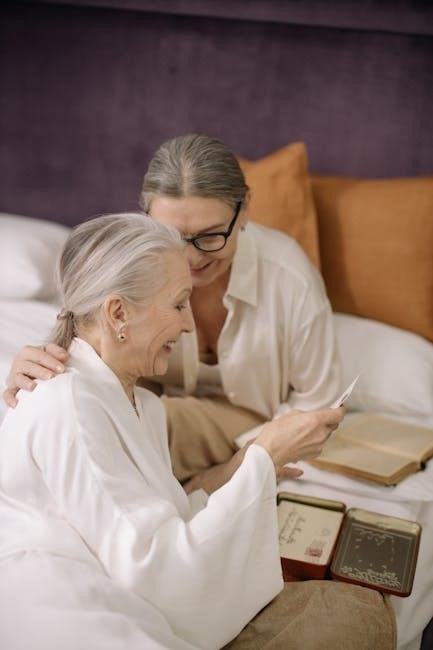
Physical Limitations and Pain
Physical limitations such as reduced mobility and strength are common among bedbound seniors. Chronic pain and discomfort can hinder exercise participation. Gentle, pain-free movements are essential to ensure safety and effectiveness, requiring careful planning and adaptation to individual capabilities and health conditions.
Motivation and Engagement
Motivation is crucial for bedbound seniors to engage in exercise routines. Caregivers play a key role by creating a supportive environment, setting achievable goals, and incorporating enjoyable activities. Positive reinforcement and clear communication help maintain interest and adherence, fostering a sense of accomplishment and overall well-being.
Medical Conditions and Safety Concerns
Medical conditions like chronic pain or limited mobility require tailored exercise plans for bedbound seniors. Safety is paramount, with caregivers ensuring proper positioning and using supportive devices. Monitoring for discomfort and consulting healthcare providers helps prevent complications, ensuring exercises are both effective and safe for vulnerable individuals.
Creating an Exercise Routine for Bed Bound Seniors
A tailored exercise plan for bedbound seniors ensures safe, gradual progression. Caregivers assist with routines, focusing on strength, flexibility, and mobility while adapting to individual health needs.
Setting Realistic Goals and Schedules
Realistic goals for bedbound seniors involve achievable milestones, like improving joint mobility or enhancing circulation. Schedules should be consistent, with short sessions to maintain engagement and prevent fatigue, ensuring gradual progress without overexertion.
Progressing Exercises Safely
Progressing exercises safely involves gradual increases in intensity and duration, tailored to the senior’s tolerance. Monitoring for discomfort or fatigue is crucial, with adjustments made to ensure continued benefits while minimizing risks of injury or strain.
Incorporating Caregiver Assistance
Caregivers play a vital role in assisting bedbound seniors with exercises, ensuring proper positioning, and providing support during movements. Their involvement helps maintain consistency, safety, and motivation, while also enabling adjustments to routines based on the senior’s capabilities and comfort levels, fostering a collaborative approach to improving physical and emotional well-being.

Safety Tips for Bed Bound Exercise
Ensure proper positioning, use supportive devices, and monitor for fatigue or discomfort to prevent complications during exercises for bedbound elderly, promoting a safe and effective routine.
Ensuring Proper Positioning
Proper positioning is crucial for bedbound exercises to prevent strain and injury. Use pillows or wedges to support the body, maintaining alignment and comfort. Caregivers should assist in adjusting positions to optimize movement and safety, ensuring exercises are performed effectively without discomfort or risk of complications.
Using Supportive Devices
Supportive devices like bed rails, grab bars, and non-slip mats can enhance safety during exercises. Lightweight resistance bands or therapy putty may also be used to strengthen muscles without strain. These tools help maintain stability and effectiveness, making exercises more accessible and comfortable for bedridden seniors while minimizing the risk of injury or fatigue.
Monitoring for Fatigue or Discomfort
Regularly monitoring for signs of fatigue or discomfort is crucial during exercises. Observing breathing patterns, facial expressions, and verbal cues helps ensure the senior’s safety and comfort. Adjusting the routine to avoid overexertion is essential for maintaining their well-being and preventing strain, ensuring exercises remain beneficial and enjoyable for bedridden individuals.
The Role of Caregivers in Exercise Routines
Caregivers play a vital role in assisting with exercises, providing stability, and encouraging participation. Their support ensures safety, motivation, and adherence to routines tailored for bedbound seniors’ needs.
Assisting with Movement and Stability
Caregivers provide physical support, ensuring safe movements and stability during exercises. They help maintain proper posture, reduce injury risk, and facilitate effective range of motion, enabling bedbound seniors to perform exercises confidently and safely, promoting independence and physical function.
Encouraging Participation and Compliance
Caregivers play a vital role in motivating bedbound seniors to engage in exercises. Positive reinforcement, clear communication, and creating a routine foster willingness to participate. Involving seniors in decisions and providing feedback enhances their commitment, making exercise a meaningful and enjoyable part of their daily care routine.
Communicating with Healthcare Providers
Effective communication with healthcare providers ensures personalized exercise plans for bedbound seniors. Caregivers should regularly update providers on the senior’s progress, pain points, and any physical changes. This collaboration helps tailor routines to meet specific needs, ensuring safety and effectiveness while addressing medical concerns promptly and appropriately.
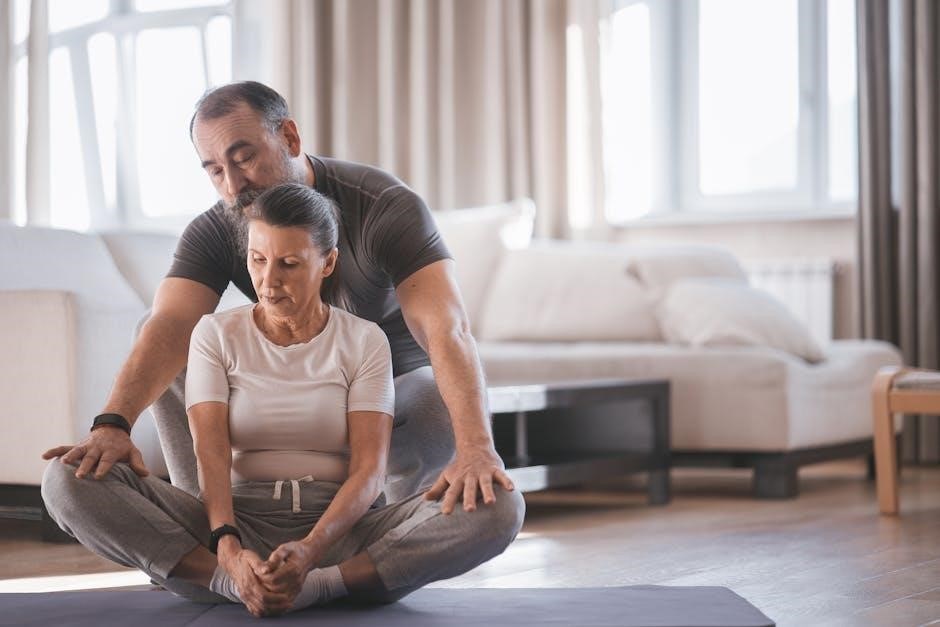
Incorporating Mental and Emotional Exercises
Mental and emotional exercises, like deep breathing, guided imagery, and cognitive games, enhance well-being and reduce stress for bedbound seniors, improving mood and focus through engaging activities.
Mind-Body Exercises for Relaxation
Mind-body exercises, such as deep breathing, guided imagery, and meditation, help bedbound seniors relax and reduce stress. These techniques promote mental calm and improve mood without physical strain, fostering emotional well-being and inner peace through focused breathing and visualization practices.
Cognitive Stimulation Activities
Cognitive exercises like puzzles, memory games, and reading engage the mind, promoting mental sharpness. These activities help maintain memory, problem-solving skills, and focus, reducing cognitive decline. Simple tasks like naming objects or discussing current events also stimulate the brain, fostering mental clarity and emotional well-being in bedbound seniors.
Social Interaction During Exercise
Social interaction during exercise enhances emotional well-being and reduces loneliness. Group sessions or caregiver involvement fosters connection, making routines enjoyable. Conversations and shared activities promote engagement, improving mood and overall mental health. This interaction also encourages participation, creating a supportive environment for bedbound seniors to stay motivated and connected during their exercise routines.

Measuring Success in Bed Bound Exercise Programs
Success is tracked through progress in mobility, strength, and overall well-being. Adjustments are made based on individual needs, ensuring exercises remain effective and safe for continued improvement.
Tracking Progress and Improvements
Regularly monitoring exercises helps assess strength and mobility gains. Caregivers document improvements in joint flexibility and muscle tone, ensuring routines are adjusted for optimal results and safety, promoting consistent progress.
Adjusting Routines Based on Needs
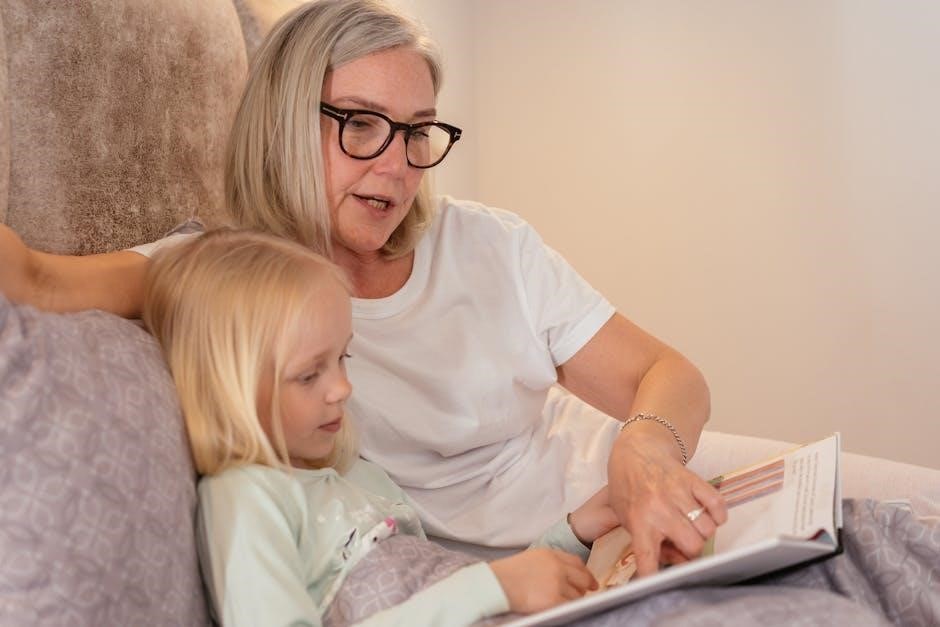
Exercise routines for bedbound seniors are tailored to individual needs. Adjustments may include modifying movements to accommodate physical limitations or incorporating new exercises to target specific areas, ensuring the program remains effective and safe over time.
Evaluating Overall Well-Being
Evaluating overall well-being in bedbound seniors involves assessing physical improvements, mental health, and quality of life. Regular monitoring helps identify progress and areas needing adjustment, ensuring exercises contribute positively to their health and happiness.
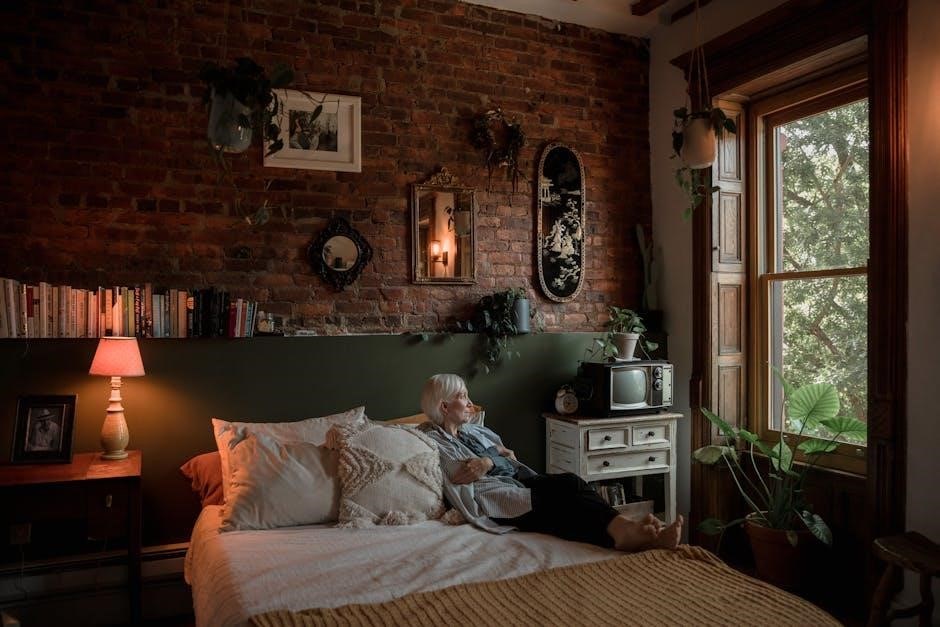
Resources for Bed Bound Exercise Programs
Downloadable PDF guides and worksheets provide structured routines. Online tutorials offer visual demonstrations, while consulting physical therapists ensures personalized and safe exercise plans for bedbound seniors.
PDF Guides and Printable Worksheets
PDF guides and printable worksheets offer structured exercise routines for bedbound seniors, including illustrations and step-by-step instructions. They provide caregivers with easy-to-follow plans, promoting muscle strength and joint flexibility while ensuring safety and proper technique.
Online Tutorials and Video Demonstrations
Online tutorials and video demonstrations provide visual guidance for performing exercises safely and effectively. These resources help caregivers and seniors follow proper techniques, ensuring exercises are done correctly and adapt to individual needs, promoting independence and confidence.
Consulting with Physical Therapists
Physical therapists offer personalized exercise plans for bedbound seniors, tailoring routines to their specific needs and abilities. Their expertise ensures exercises are safe, effective, and aligned with medical conditions, enhancing mobility and overall well-being while minimizing risks.

